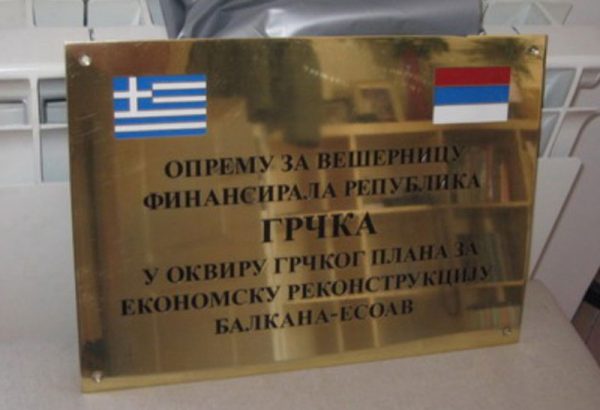What is...?
BRASS
Brass is an alloy consisting of copper and zinc, typically containing about 40% zinc. This alloy melts at a temperature of approximately 900 degrees Celsius. Brass is known for its corrosion resistance, but it is not as good an electrical conductor as pure copper or some other metals.
Due to its relatively easy workability and distinctive golden-yellow color, brass is often used for decorative purposes, such as making bathroom fixtures, faucets, and various decorative items. Such products are often coated with chrome or other protective layers to enhance wear resistance. If brass is not protected or coated, exposure to the atmosphere can lead to tarnishing and the formation of a patina, which gives the surface a brownish color.


Engraving
Engraving is a material processing technique that involves removing or shaping the surface layer using specialized tools or machines. It is most commonly used for decorating or marking various materials such as metals, wood, glass, plastic, and others. During the engraving process, precise removal of the material’s surface creates permanent relief shapes or inscriptions.
Engraving is often used for personalizing items such as jewelry, watches, medals, name plates, and tags. In industry, engraving is applied for marking tools, devices, and machine parts.
For brass, engraving is most commonly performed using CNC machines or lasers. The surface of the brass is prepared in advance by grinding and polishing to achieve the desired smoothness. After engraving, the recessed areas can be further treated with coloring or patination to enhance contrast and visual appeal.
Engraving on brass is popular due to its decorative applications in the production of nameplates, souvenirs, and artistic items, thanks to the distinctive golden color of brass that easily complements various designs.
Sand Casting
Sand casting is a traditional method for producing metal castings, where molten metal is poured into a mold made from special sand. This process is popular due to its simplicity and low cost, and it is used to create various metal parts, such as castings made of brass, bronze, aluminum, or cast iron.
The sand casting process involves the following steps:
1. Model Preparation: First, a model is made from materials such as wood, gypsum, plastic, or metal, which serves as an exact replica of the desired casting at a 1:1 scale.
2. Mold Creation: The model is placed in a frame (flask) filled with casting sand, typically a mixture of quartz sand and binding materials. The sand is compacted around the model to create an impression, and then the model is carefully removed, leaving a cavity in the shape of the future casting.
3. Pouring: Molten metal is poured into the cavity formed in the sand. The metal cools and solidifies, taking the shape of the mold.
4. Mold Removal: After the metal has cooled and hardened, the sand is removed, and the casting is extracted from the mold.
5. Finishing: The casting may undergo further processing, such as grinding, polishing, or machining, to achieve the desired final appearance and dimensions.
Sand casting is used in various industries, including automotive, machinery, and art, for producing complex and large parts or sculptures.
Write to us!
Contact us
- Marijane Gregoran 37/a
- +381 (0)64 127 3139
- +381 (0)11 2757 127
- WORKING HOURS
- Monday - Friday 09.00h to 17.00h
